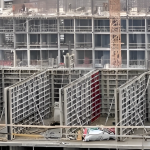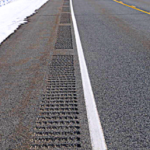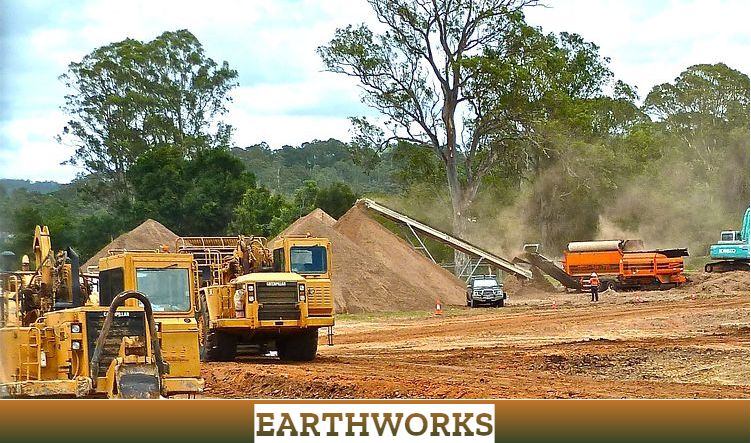
Earthworks are structures built by moving and/or processing large amounts of earth or unformed rock. To attain the planned levels, earthwork is done to alter a site’s topography. Earthwork involves cutting and filling to produce the desired topography.
Earthworks operations comprise the excavation, transport, placement, and compaction of fill materials used to build earth structures and are an important component of practically all civil engineering projects. A thorough grasp of earthwork design and construction allows for the effective completion of projects and the avoidance of costly complications.
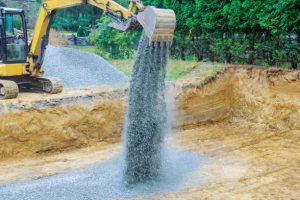
Backfill –Backfilling is part of the earthworks process where a hole is scooped out of the earth with the stuff that was dug out of it. Backfilling is the practice of refilling or reusing soil that has been removed during the construction of a project in order to strengthen and maintain the foundation or any other structural part.
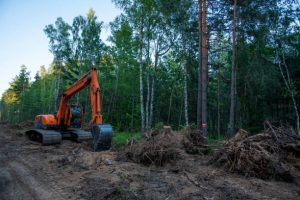
Clearing and Grubbing – It consists of removing and disposing of plants, lingering roots, and other obstacles in the soil so that the land is suitable for construction.

Lay out –a technique for interpreting a construction design and marking the planned structure’s position. Construction layout, also known as construction staking or site layout survey, is the procedure by which a contractor studies the building plans (blueprints) and then marks the locations of all items on the construction site with stakes.
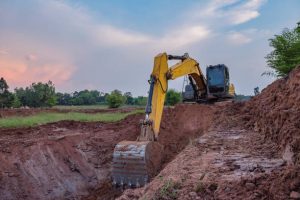
Excavation –Excavation construction is utilized in practically every structure’s construction. It is used to lay the foundation for homes, roads, and buildings, as well as to create reservoirs such as lakes and pools, which contain some of our favorite summer activities. It’s also used to dig up valuable metals and minerals.
Excavation speeds up the building process and allows us to build our most critical structures to their full potential by giving us more control over the project site.

Compaction – Compaction is a process of increasing soil density and removing air, usually by mechanical means. The size of the individual soil particles does not change, neither is water removed.

Embankment –An embankment is a volume of earthen material that is placed and compacted to raise the grade of a highway (or railway) above the level of the surrounding ground surface.
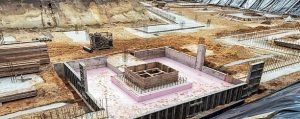
Foundation- A foundation is a structural element that links a structure to the ground and transfers loads from the structure to the ground. Foundations are classified as either shallow or deep.



